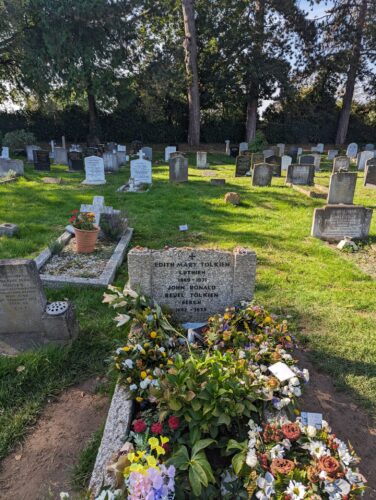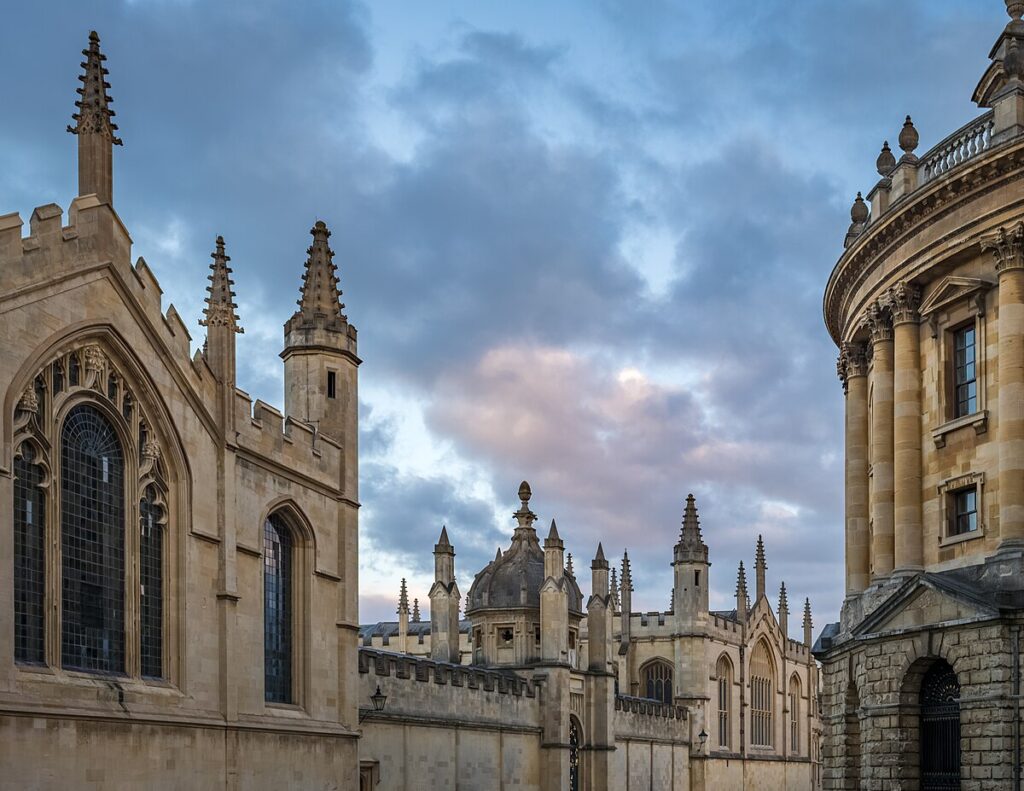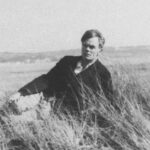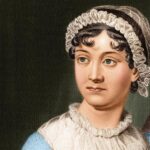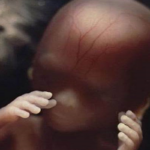Blog Post
In Oxford with the Inklings
The churchyard where Jack Lewis lies at rest is overgrown, surrounded by trees, and strewn with ancient tilting tombstones marked with moss and lichen. Lewis’s gravestone is a simple granite slab: “Clive Staples Lewis. Born Belfast 29th November 1898. Died in this Parish 22nd November 1963. Men Must Endure Their Going Hence.” Beneath his name is that of his brother Warren (known as Warnie) who died a decade later. Not much has changed here in the decades since the brothers were committed to the earth.
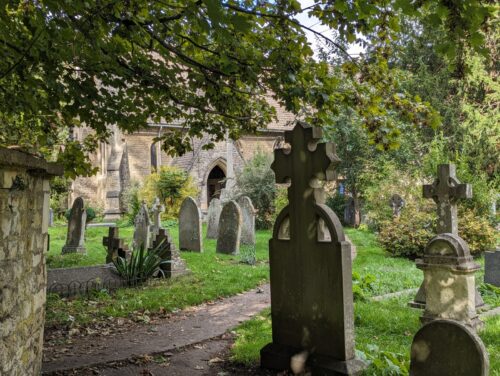
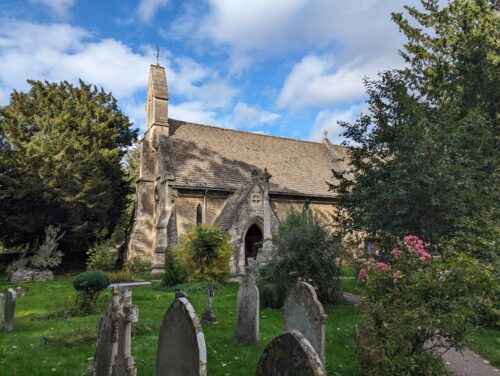
Inside Holy Trinity Church, Charmaine and I sat in Jack’s pew as a tour group from Norway clustered at the front. An elderly guide was telling his favorite story about Lewis, which he had heard from Lewis’s literary executor Walter Hooper. The two were on a walk when a beggar asked for change. The terminally generous Lewis immediately plunged his hand into his pocket and gave him what amounted to a hefty sum. Hooper rebuked him; the beggar, he said, would probably use it to buy beer. Lewis shrugged. “That’s what I would have spent it on,” he replied.
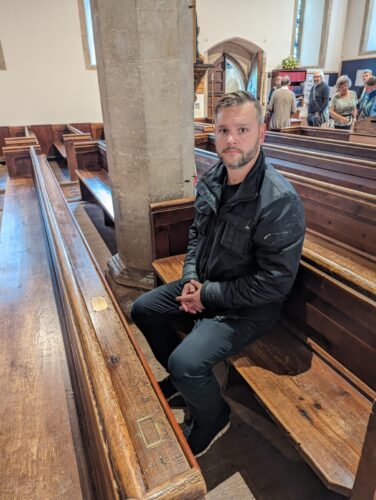
I was in England to give two lectures at the national conference of Society for the Protection of Unborn (SPUC), one of the world’s oldest pro-life campaign organizations. There is a connection between SPUC and the Inklings of Oxford. Owen Barfield, the philosopher, poet, and friend of Lewis and J.R.R. Tolkien, was one of its earliest supporters. SPUC was created as a countermovement during the parliamentary discussions leading up to the passage of the 1967 Abortion Act, which Barfield fiercely opposed.
The Inklings are the most famous literary group to emerge from Oxford. The group met in ancient pubs like the Eagle and Child (currently closed for renovations) and the Lamb and Flag (I stopped for a pint of “Inklings ale”) to discuss faith, literature, and their own writings. Barfield, a committed Anglican, influenced both Lewis’s Space Trilogy and Tolkien’s Middle Earth. Barfield’s pro-life activism was an extension of the Inklings’ collective worldview into the post-Christian era that Lewis so presciently foresaw; Lewis called Barfield “the wisest and best of my unofficial teachers.”
Official Oxford has an uneasy relationship with the Inklings and their Christian legacy. There are tours, to be sure, but the gift shops are packed with Harry Potter swag and Inspector Morse memorabilia, but aside from books at Blackwell’s and the Bodleian Library store, the world-famous characters of Narnia and Middle Earth are commercially absent. At the Kilns, where Lewis lived with his brother Warnie for 33 years, the tour guide told us that Lewis has been largely neglected; his home, rendered famous by his bestselling writers, had turned into a decrepit dump until some American Christians visiting Oxford decided to set up a non-profit to purchase and restore it in 1993. Visiting scholars now live there, and it is open for tours.
In my imagination, the Kilns was scarcely a real place; it had floated free of England and joined the realm of Narnia. It was jarring to discover that it is now the last house in a large subdivision, the ten acres that made up the grounds long parceled out and sold. The repairs on the red-brick house are perpetually ongoing; the park behind it, where Lewis loved to walk, is still there, pocked with bomb shelters from the war. Lewis’s stepson Douglas Gresham, who is now sadly suffering from dementia, told me many stories about what it was like to grow up there; I could picture many of them as we walked through the house.
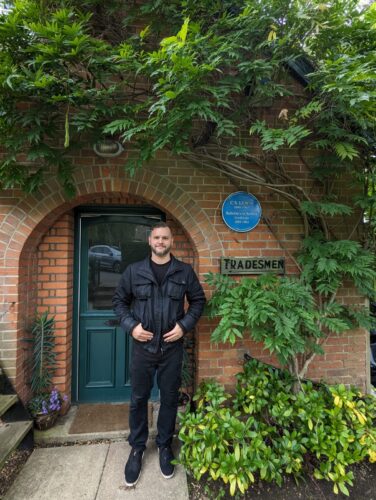
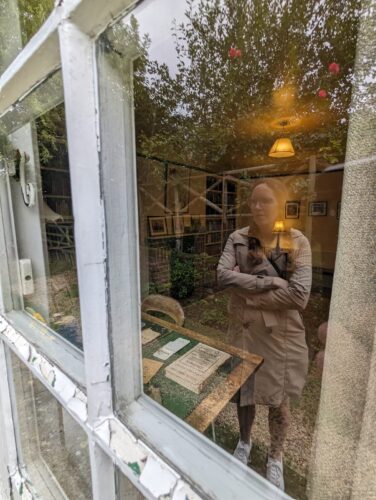
History sort of piles on top of itself in Oxford. John Wycliffe taught here. William Tyndale studied here. The Oxford Martyrs, bishops Hugh Latimer and Nicholas Ridley, were burned to death near Broad Street in 1555; the Archbishop of Canterbury Thomas Cranmer, who was in the crowd, would meet the same fate the following year. Latimer reportedly told his fellow martyr: “Be of good comfort, Master Ridley, and play the man; we shall this day light such a candle by God’s grace in England as shall never be put out.”
Ridley’s final words before the fire was lit blaze bright nearly five centuries later: “Heavenly Father, I give Thee most hearty thanks that Thou hast called me to a profession of Thee even until death. I beseech Thee, Lord God, have mercy on this realm of England, and deliver the same from all her enemies.”
Our tour guide dutifully pointed out Oxford’s riot of religious symbolism—the churches, King James clutching his Bible over the arch of the Bodleian Library—but told us, dismissively, that this stuff was because “pretty much everybody believed in the supernatural back then.” Our more enlightened generation now believes in transgenderism rather than the Resurrection, and some apparently still cling to the belief this is an improvement.
In St. Mary’s Passage, a narrow alley off High Street near the University Church of St. Mary the Virgin, a 17th-century door—dubbed the “Narnia Door”—features a carving of a maned, lion-like face; on either side are two satyr-like “fauns” holding flutes, and a few feet away is a tall black Victorian lamppost. Lewis walked this way countless times, and these scenes made it into the Chronicles of Narnia as Aslan, Mr. Tumnus, and the scene of the faun’s fateful meeting with Lucy Pevensie. There are bits of Narnia all over Oxford.
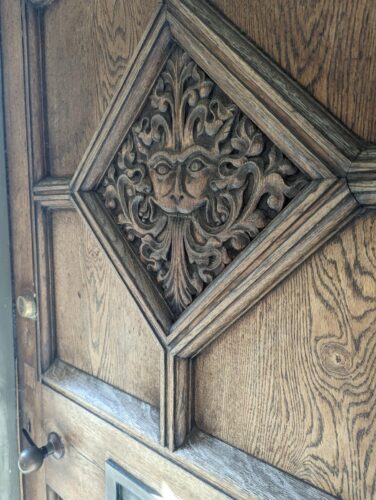
If the Inklings aren’t your cup of tea, there is something for everyone. A sign in the Turf Tavern, which opened around the end of the 18th century as a public house called The Spotted Crow, boasts about those who have “bent their elbows” on its tables, including Thomas Hardy, Margaret Thatcher, Ernest Hemingway, Oscar Wilde, and (less impressively) David Cameron and Boris Johnson. It is also the tavern where future Australian Prime Minister Bob Hawke set a Guiness World Record for drinking a yard glass of ale in 11 seconds in 1963 (I looked it up—that’s 1.4 litres), and where future president Bill Clinton famously smoked pot, but didn’t inhale.
Peter Hitchens once described Oxford to me as “a kind of paradise separate from the world,” and it was easy to see what he meant. We walked past the hotel restaurant where, decades ago, Tolkien sat down to read the first bit of a new story he was working on but didn’t yet care for: The Lord of the Rings. Blackwell’s of Oxford, one of the world’s largest bookstores with roughly 125,000 books across four floors, was a wonderful and dangerous place where I could bankrupt myself in a few hours with very little effort.
On the way out of town, we stopped at the Wolvercote Cemetery. Tolkien and his wife Edith are buried here. Beneath their names on the tombstone were the names of the two great lovers of his Middle Earth legendarium. Under Edith’s name: Luthien. Under Tolkien’s: Beren. He survived her by only two years, dying a decade after Lewis. Of the original Inklings, Owen Barfield was the last to die, passing away in 1997. But like the literary giants he supped with, his work lives on—not only in his own books, but in the ongoing work of the Society for the Protection of Unborn Children, the largest pro-life group in the UK.
